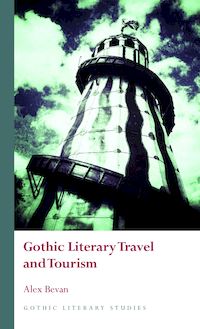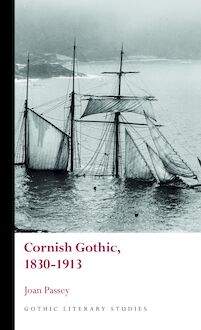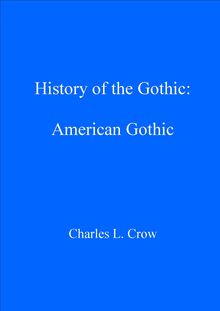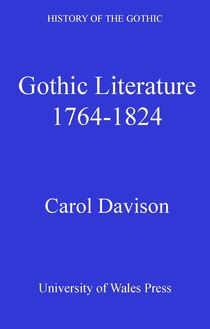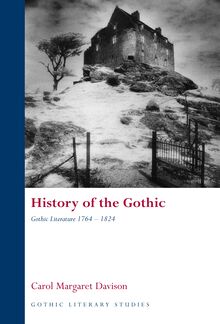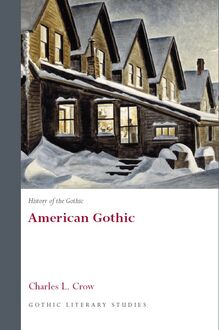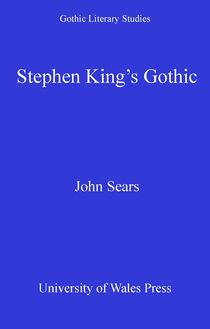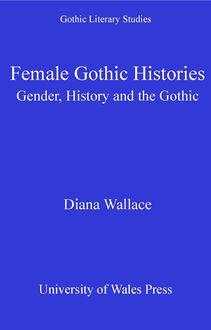-
 Univers
Univers
-
 Ebooks
Ebooks
-
 Livres audio
Livres audio
-
 Presse
Presse
-
 Podcasts
Podcasts
-
 BD
BD
-
 Documents
Documents
-
- Cours
- Révisions
- Ressources pédagogiques
- Sciences de l’éducation
- Manuels scolaires
- Langues
- Travaux de classe
- Annales de BEP
- Etudes supérieures
- Maternelle et primaire
- Fiches de lecture
- Orientation scolaire
- Méthodologie
- Corrigés de devoir
- Annales d’examens et concours
- Annales du bac
- Annales du brevet
- Rapports de stage
La lecture à portée de main
Vous pourrez modifier la taille du texte de cet ouvrage
Découvre YouScribe en t'inscrivant gratuitement
Je m'inscrisDécouvre YouScribe en t'inscrivant gratuitement
Je m'inscrisEn savoir plus
Vous pourrez modifier la taille du texte de cet ouvrage
En savoir plus

Description
Sujets
Informations
| Publié par | University of Wales Press |
| Date de parution | 01 avril 2009 |
| Nombre de lectures | 0 |
| EAN13 | 9781783163656 |
| Langue | English |
Informations légales : prix de location à la page 0,1250€. Cette information est donnée uniquement à titre indicatif conformément à la législation en vigueur.
Extrait
REPUBLICANISM AND THE AMERICAN GOTHIC
S ERIES P REFACE
Gothic Literary Studies is dedicated to publishing groundbreaking scholarship on Gothic in literature and film.The Gothic, which has been subjected to a variety of critical and theoretical approaches, is a form which plays an important role in our understanding of literary, intellectual and cultural histories.The series seeks to promote challenging and innovative approaches to Gothic which question any aspect of the Gothic tradition or perceived critical orthodoxy.
Volumes in the series explore how issues such as gender, religion, nation and sexuality have shaped our view of the Gothic tradition. Both academically rigorous and informed by the latest developments in critical theory, the series provides an important focus for scholastic developments in Gothic studies, literary studies, cultural studies and critical theory.The series will be of interest to students of all levels and to scholars and teachers of the Gothic and literary and cultural histories.
S ERIES E DITORS
Andrew Smith, University of Glamorgan
Benjamin F. Fisher, University of Mississippi
E DITORIAL B OARD
Kent Ljungquist, Worcester Polytechnic Institute Massachusetts
Richard Fusco, St Joseph s University, Philadelphia
David Punter, University of Bristol
Chris Baldick, University of London
Angela Wright, University of Sheffield
Jerrold E. Hogle, University of Arizona
Republicanism and the American Gothic
Marilyn Michaud
Marilyn Michaud, 2009
All rights reserved. No part of this book may be reproduced in any material form (including photocopying or storing it in any medium by electronic means and whether or not transiently or incidentally to some other use of this publication) without the written permission of the copyright owner except in accordance with the provisions of the Copyright, Designs and Patents Act 1988 or under the terms of a licence issued by the Copyright Licensing Agency Ltd, Saffron House, 6-10 Kirby Street, London, EC1N 8TS. Applications for the copyright owner s written permission to reproduce any part of this publication should be addressed to the University of Wales Press, 10 Columbus Walk, Brigantine Place, Cardiff, CF10 4UP.
www.uwp.co.uk
British Library Cataloguing-in-Publication Data
A catalogue record for this book is available from the British Library.
ISBN 978-0-7083-2146-1
e-ISBN 978-1-78316-359-5
The right of Marilyn Michaud to be identified as author of this work has been asserted by her in accordance with sections 77, 78 and 79 of the Copyright, Designs and Patents Act 1988.
LourensSmak/Alamy
C ONTENTS
Introduction
1 Republican Historiography
2 Vampires and the Cyclical Theory of History
3 The Double and Republican Masculinity
4 Conspiracy and Hypocrisy in Rosemary s Baby
5 Virtue and Corruption in Truman Capote s In Cold Blood
Afterword
Bibliography
Introduction
To penetrate fully into a work of literature is finally to make a serious effort to develop the historical imagination, to view the world . . . through another culture, another time, another nationality.
Joseph Anthony Mazzeo 1
The initial task of scholarship devoted to the Gothic is often an attempt at definition: what is Gothic? Typically, the discussion will begin with an exploration of the relationship between the nascent British form and its various progenitors followed by the inevitable conclusion that the term is fluid , troublesome and mutable . The solution, Fred Botting suggests, is more criticism: Elusive, phantom-like, if not phantasmatic, floating across generic and historical boundaries, Gothic (re) appearances demand and disappoint, and demand again, further critical scrutiny to account for their continued mutation. 2 In an effort to illuminate the genre, analysis has splintered into a host of thematic, temporal and regional subspecialities each functioning to demarcate the multiplicity of approaches and the changing interpretative needs orbiting the term Gothic . Yet, while these new readings challenge some durable myths surrounding the production, circulation and interpretation of texts, they too tend to be fragments, telling only part of the story of the Gothic s origin and meaning. The result is that significant explanatory relations often go unrecognized and, in particular, the relationship between the term s literary meaning and its prevalent historical and ideological usages. 3 This is particularly true in relation to the American Gothic which for many critics represents a troublesome contradiction. As Teresa Goddu argues, when modified by the word American, the Gothic loses all its usual referents ; not only does it lack the self-evident validity of its British counterpart , it is essentially antagonistic to American identity. 4 American Gothic, Robert Miles asserts, is an oxymoron signalling its own uncanniness : The Gothic ought to have undergone ideological erasure, foritsmeaning was essentially anti-American: it spelled entrapment, enclosure, the inescapable, parasitic power of the past, the inglorious triumph of class, feudalism, vestigial institutions, and even nature itself. 5
While it is no longer contentious to claim that American culture is drenched in Gothic sensibility , for many critics, its presence in the land of light and affirmation remains an unremitting paradox. 6 The popularity of American Gothic fiction indicates how ardently critics feel the need to explain the persistence of the form in a political and cultural environment seemingly divorced from traditional Gothic impulses. To account for a Gothic imagination in American culture, analysis has centred on psychology. Seen as a reflection of colonial anxieties, Puritan repression and pathological guilt resulting from the nation s encounter with slavery and Indian massacre, the parameters of the American Gothic are marked primarily by psychological, internalised, and predominately racial concerns . 7 In Love and Death in the American Novel , arguably the first work to focus exclusively on American Gothic writing, Leslie Fielder s reading of early American texts exemplifies this approach: European Gothic identified blackness with the super-ego and was therefore revolutionary in its implications; the American gothic . . . identified evil with the id and was conservative at its deepest level of implications, whatever the intent of its authors. 8 Unlike their British counterparts, American writers are always in a state of beginning, saying for the first time . . . what it is like to stand alone before nature, or in a city as appallingly lonely as any virgin forest . For Fiedler, the Gothic is juvenile and repetitive because it deals primarily with a world of limited experience: a world American authors return to time and again due to their inability to deal with adult heterosexual love and [their] consequent obsession with death, incest, and innocent homosexuality . Contemporary writers, he claims, are doomed to repeat these patterns because they share a similar consciousness and the inescapable conditions of American life. Therefore, for Fiedler, the Gothic must be symbolically understood, its machinery and d cor translated into metaphors for a terror psychological, social and metaphysical . 9
Fiedler s analysis has had enormous influence on contemporary readings of American Gothic fiction. Propelled by his unequivocal announcement that the American novel is pre-eminently a novel of terror , subsequent critics constructed their analysis of the Gothic around the assumption that the psyche is more important than society . 10 As an explanation for why the Gothic is so at home on such inhospitable ground , Eric Savoy contends that Gothic narratives express a profound anxiety about historical crimes and perverse human desires that cast their shadow over what many would like to be the sunny American republic . Like Fielder, Savoy views the American Gothic as a pathological symptom rather than a proper literary movement . 11 In American Gothic: New Interventions in a National Narrative , Martin and Savoy claim their project is indebted and in many way supplementary to Fiedler s pioneering conjunction of historicism and psychoanalysis . For these critics, Fiedler s analysis has lost none of its freshness and provides the cultural frame for subsequent inquiry . 12 Yet, however valuable Fiedler s work has been to our understanding of American Gothic, it is useful to remember that his interpretative framework arises out of a political culture that eschewed social and ideological conflict in favour of an all-pervading liberal consensus. It was, as Daniel Bell declared, the end of ideology , a period in which academics were less interested in political history than in wresting the fiction of the American renaissance away from the Marxist intellectuals of the 1920s and 1930s and replacing it with a pluralist, consensus model free of the anti-capitalism of the Progressives and the formulism of the New Critics. The intellectual movement from Progressive to new liberal ideology was also contemporaneous with the development of the American studies curriculum in the 1950s and a new-found interest in the study of culture. Crystallizing this change was Lionel Trilling s The Liberal Imagination , a work that would come to dominate cultural theory in the mid twentieth century. While conservatives called for a life-drive in literature, for immersion in the American past, for recognition of progress and the goodness of man , Trilling emphasized the disenchantment of our culture with culture . 13 If the Progressive school interpreted American history as edging ever closer toward a form of democracy that would expose the material roots of conflict in class struggle, post-war liberals were suspicious of a linear model of progress and substituted a model of history characterized by ambiguity, paradox and irony. 14 Trilling s novel, The Middle of the Journey (1947), exposes this interest in t
-
 Univers
Univers
-
 Ebooks
Ebooks
-
 Livres audio
Livres audio
-
 Presse
Presse
-
 Podcasts
Podcasts
-
 BD
BD
-
 Documents
Documents
-
Jeunesse
-
Littérature
-
Ressources professionnelles
-
Santé et bien-être
-
Savoirs
-
Education
-
Loisirs et hobbies
-
Art, musique et cinéma
-
Actualité et débat de société
-
Jeunesse
-
Littérature
-
Ressources professionnelles
-
Santé et bien-être
-
Savoirs
-
Education
-
Loisirs et hobbies
-
Art, musique et cinéma
-
Actualité et débat de société
-
Actualités
-
Lifestyle
-
Presse jeunesse
-
Presse professionnelle
-
Pratique
-
Presse sportive
-
Presse internationale
-
Culture & Médias
-
Action et Aventures
-
Science-fiction et Fantasy
-
Société
-
Jeunesse
-
Littérature
-
Ressources professionnelles
-
Santé et bien-être
-
Savoirs
-
Education
-
Loisirs et hobbies
-
Art, musique et cinéma
-
Actualité et débat de société
- Cours
- Révisions
- Ressources pédagogiques
- Sciences de l’éducation
- Manuels scolaires
- Langues
- Travaux de classe
- Annales de BEP
- Etudes supérieures
- Maternelle et primaire
- Fiches de lecture
- Orientation scolaire
- Méthodologie
- Corrigés de devoir
- Annales d’examens et concours
- Annales du bac
- Annales du brevet
- Rapports de stage

